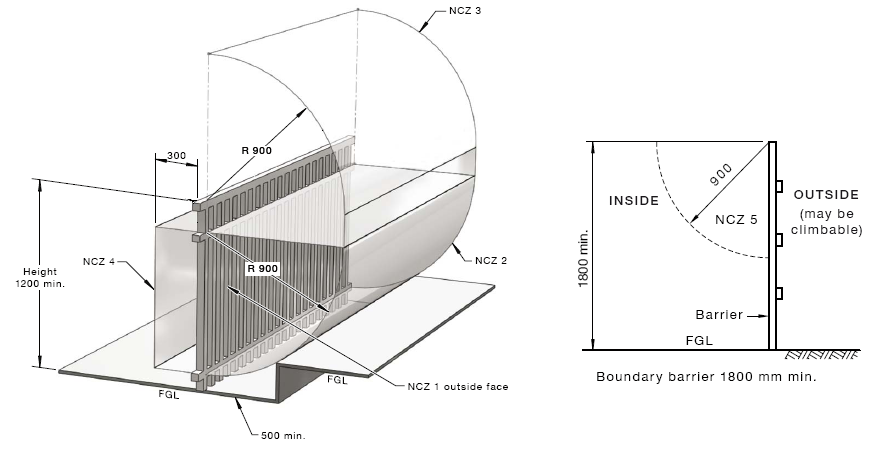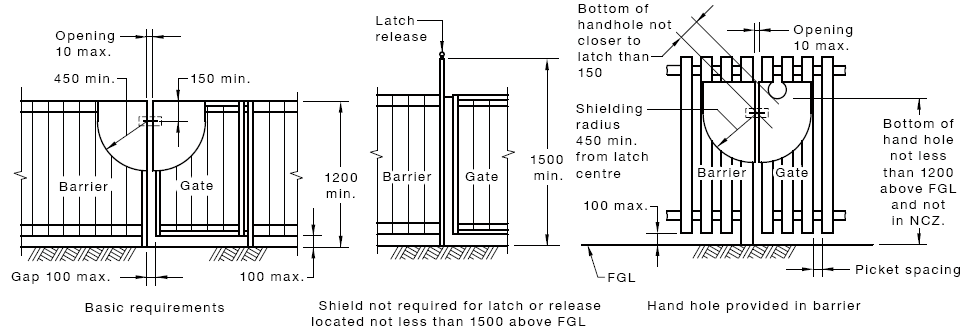Pool and spa fencing and safety barriers
Key points
- This page has information about fencing and barriers around backyard pools and spas. Please note, it's only a guide.
- If you own or rent a property with a pool or spa, you need to make sure you have a fence/safety barrier around it at all times. You need to do this even if no children live on the property.
You must have a compliant pool fence around any new or existing pool or spa that is capable of holding a depth of 300 millimetres (30 centimetres) or more.
This includes a temporary pool (such as an inflatable pool) that can hold 30 centimetres of water. You must also register the pool or spa with Council and arrange a safety barrier inspection every 4 years in line with Victorian Government legislation.
Pool safety barrier and fencing inspections can be arranged independently or through Council. You can book your pool safety barrier and fencing inspection here or find out more about registering your backyard swimming pool or spa here.
- You'll need to engage a building surveyor before you:
- build a new pool or spa
- organise for a spa or constructed pool to be delivered to your property
- put up a new pool fence/barrier
- make changes to an existing fence or barrier (unless directed by a registered inspector)
The building surveyor will assess the documents you submit, give you advice and issue a building permit. The building permit ensures the barrier will meet legal requirements.
Pool and spa fencing requirements
- The following points are only a guide and don't include all regulations.
- Before you start any works, you'll need a building permit, which you can get through a private building surveyor.
Building permit requirements apply to any pool or spa that can hold 300 millimetres (30 centimetres) of water. This includes temporary and inflatable ones.
- Height: The fence/barrier needs to be at least 1.2 metres high. (This rule applies to most pools or spas that can hold 300 millimetres of water.
- Non-climbable zone: This rule applies to most pools or spas that can hold 300 millimetres of water. The fence or barrier needs to have:
- a clear space of at least 900 millimetres (90 centimetres) from the outside the barrier (including an arc at the top of the fence)
- a clear space of at least 300 millimetres (30 centimetres) from the inside of the barrier.
These spaces must be clear of objects that people can climb on. This includes other buildings, retaining walls, the boundary fence (the one around the property), pot plants and outdoor furniture. View diagram: non-climbable zone
- Boundary fence: The boundary fence (the fence around the property) needs to be at least 1.8 metres high. If the boundary fence forms part of the pool/spa safety barrier, you need to make sure it's kept in good condition.
- Gates and latches: Gates must swing away from the pool and be self-closing and self-latching. The latch must not be able to reopen unless someone deliberately opens it. The latch needs to be at least 1.5 metres from the ground or surface. View diagram: gates and latches
- Secure and strong barrier: Property owners and renters need to make sure pool barriers are in good condition at all times.The fence must be secure and able to stand up to reasonable force.
- Temporary or inflatable pools: Must only be installed within an approved pool barrier, which you can have inspected by a registered pool inspector. You must register temporary and inflatable pools that can hold 300 millimetres of water by the 4th day the pool has been erected. Property owners need to make sure pool barriers are in good condition at all times (even if the property is rented).
- No access from buildings: You must not be able to directly access any new pool or spa from a building. This might include a house or garage.
- Above-ground pools
The wall of an above ground pool can form part of a pool barrier if approved by a building surveyor and:- the pool walls are at least 1.2 metres high (above the ground level)
- a child can't climb the pool walls – you’ll need barriers around the ladder, pump and filter to prevent this.


